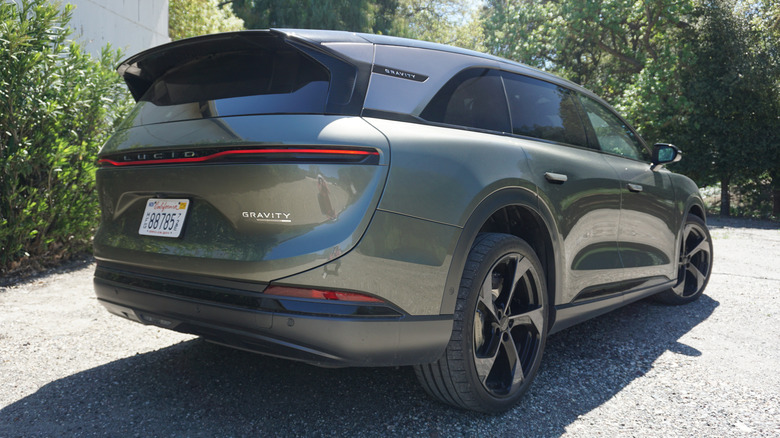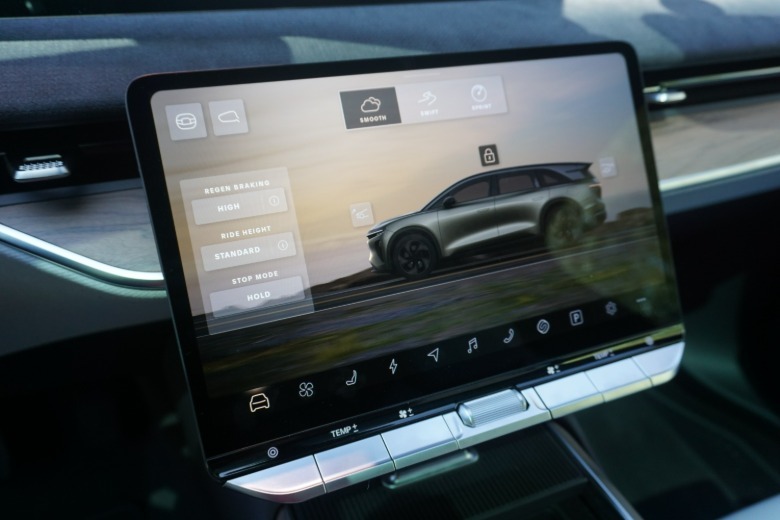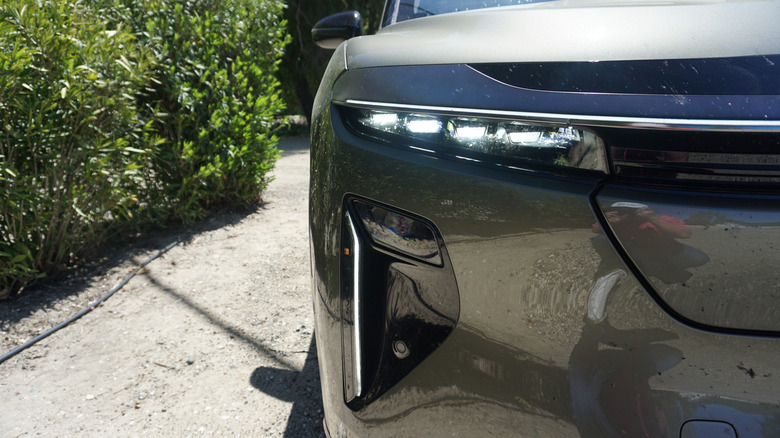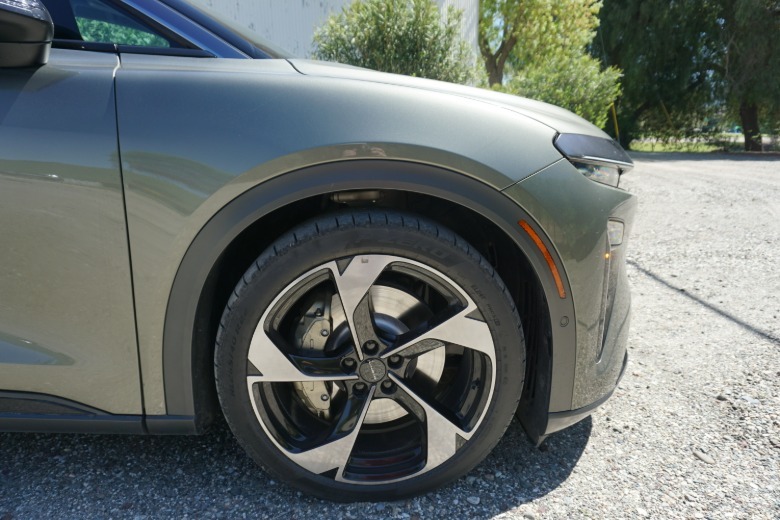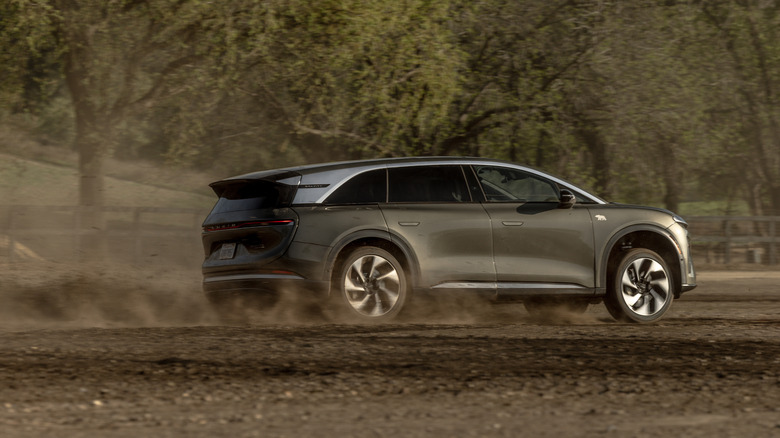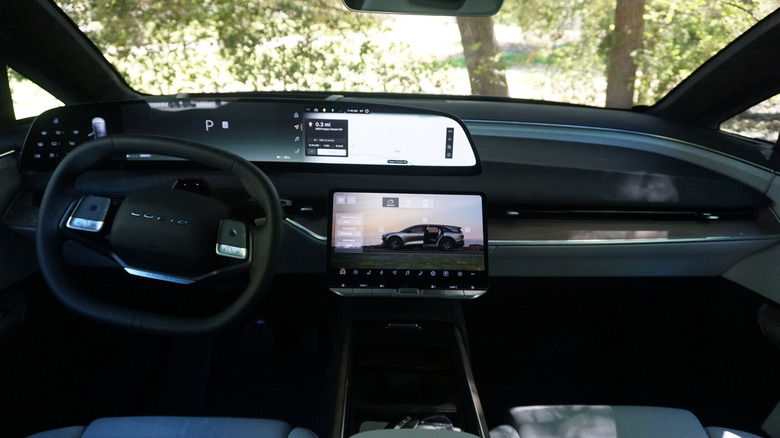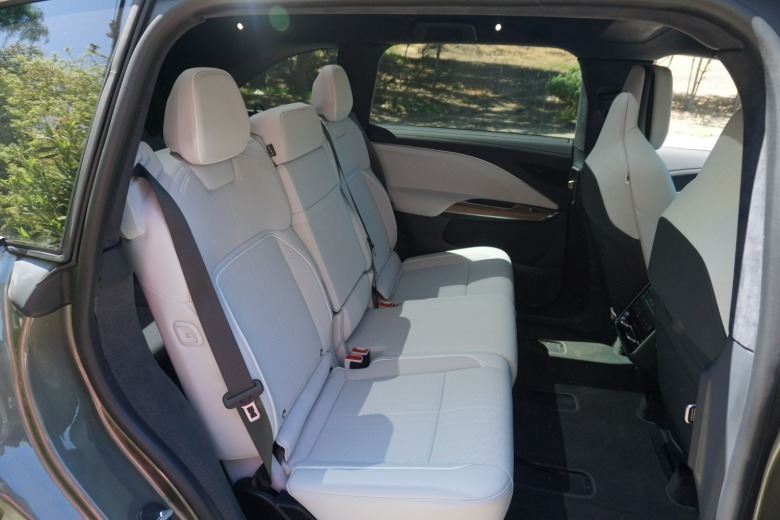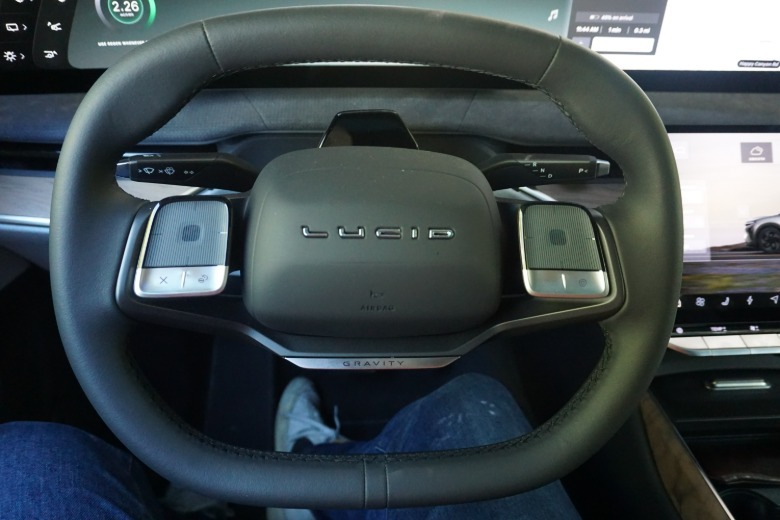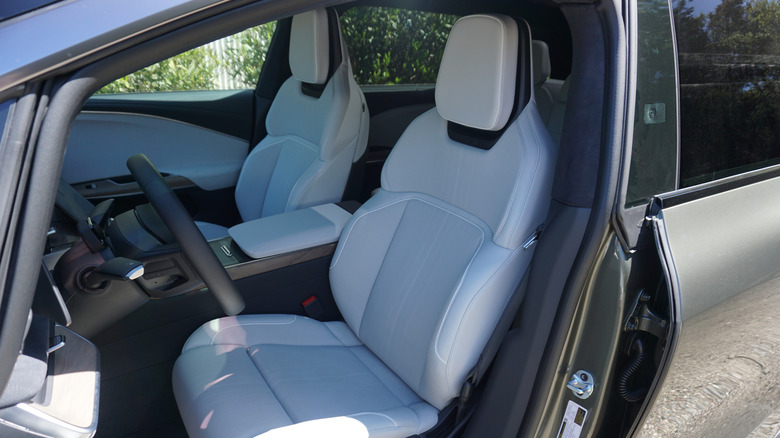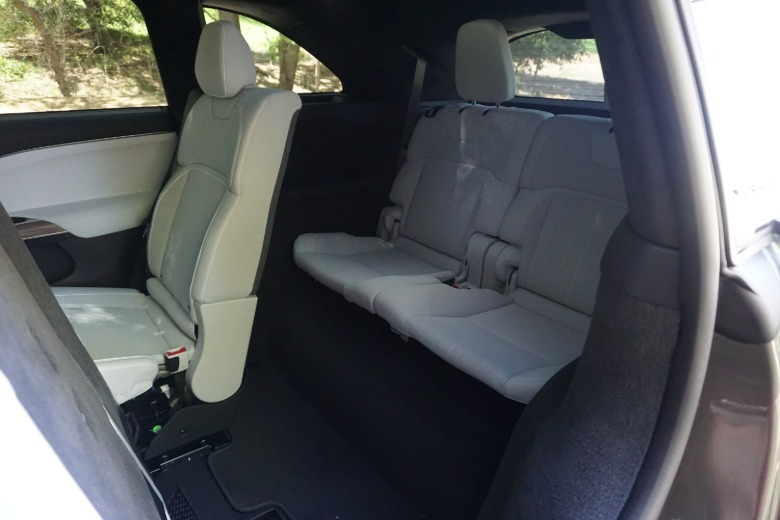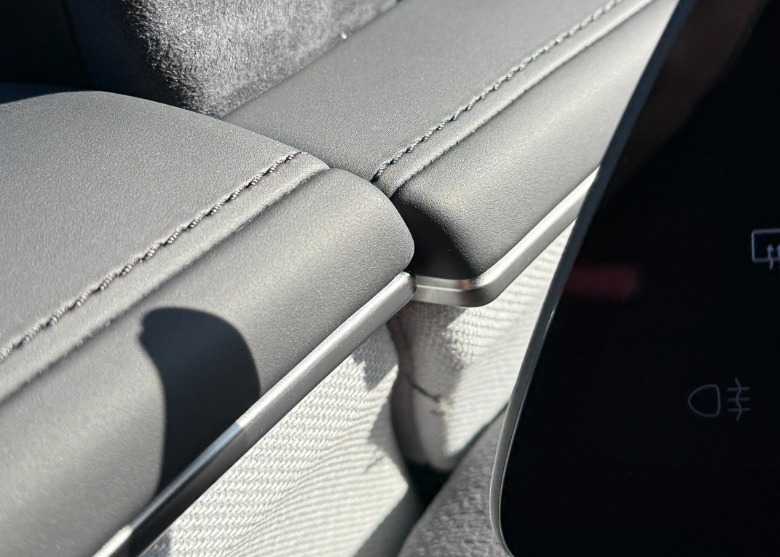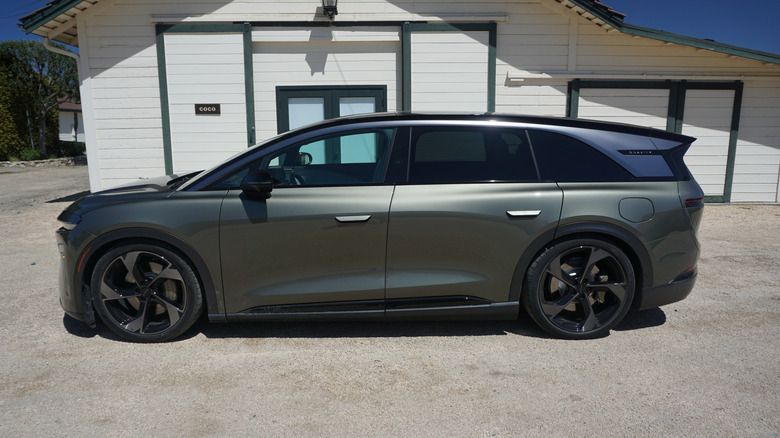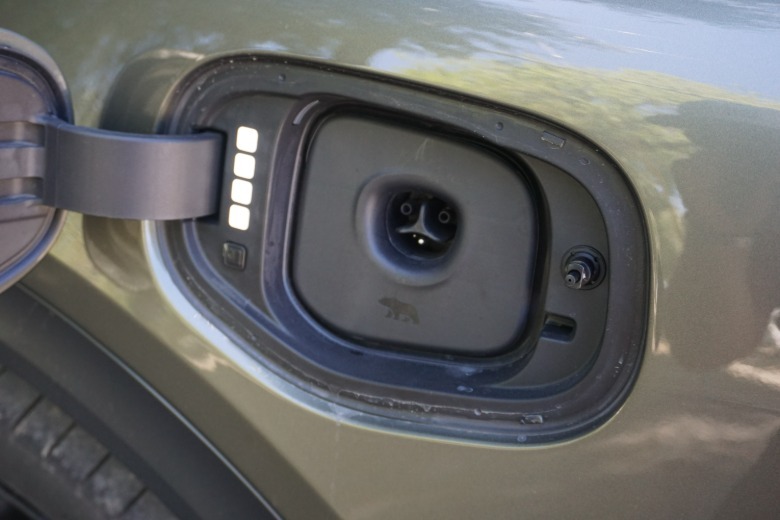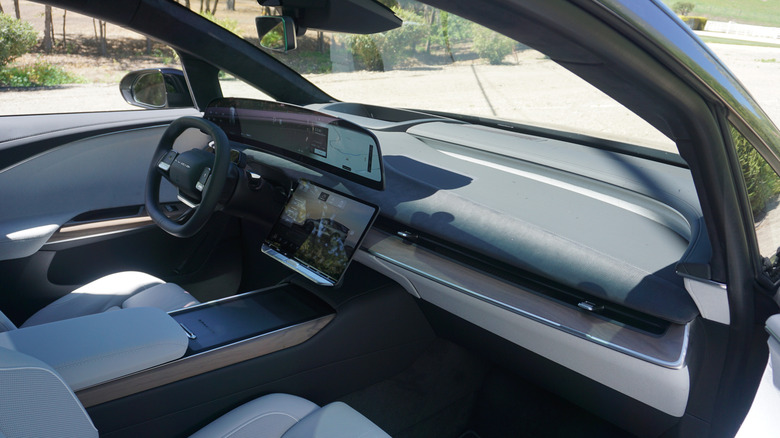Lucid presented its new crossover — the Gravity — as a bit of a Swiss Army Knife. The company said it could do just about anything and everything you throw at it. I usually take stuff like that with a grain of salt, but after driving the 2025 Lucid Air Gravity Grand Touring, I’m convinced there are dozens of cars that are now rendered pointless. Yes, it really is that good. No matter what I asked it to do, the Gravity answered the call and then some. There are very few tasks that the Gravity cannot handle.
Lucid hasn’t had the most financial stability in the industry over the past few years. It hit a real home run with the Air when it came out for the 2022 model year, but it took a while for sales to hit meaningful numbers, and even then a large luxury sedan is a hard sell. We’re living in an SUV-loving world, so Lucid’s second act, the Gravity, needed to be excellent if it wants to compete in an extremely important part of the market. Luckily for Lucid — and the people who put down deposits for the Gravity — this new SUV is even better than advertised, and it leaves you wondering why other cars can’t be like it.
Full Disclosure: Lucid flew me out to Southern California, fed me and put me up in a very nice hotel all so I could drive the 2025 Gravity.
The power of Gravity
There are tons of reasons why the Gravity Grand Touring is so impressive, and I’ll get into them all shortly, but the most standout thing about this nearly 6,000-pound, seven-seat electric crossover is the way it drives. Lucid says its goal with the Gravity was to create a “seven seat supercar,” and while that’s a bit of hyperbole, it’s not a claim that is completely without merit.
For now the Gravity only comes in Grand Touring trim, which has two quite compact yet audibly noticeable electric motors mounted on the front and rear axles. Combined, the whole drive unit puts out an extremely healthy 828 horsepower and 909 pound-feet of torque. It’s enough juice to get the Gravity from 0 to 60 mph in just 3.4 seconds, and it feels every bit as quick as that. Despite its size, the big Lucid still gives you that pinned-to-your-seat feeling that you get with so many EVs these days.
Still, the range is quite good — nearly class-leading, in fact, just 10 miles behind the Cadillac Escalade IQ. Energy is stored in a 123-kWh battery, which gives the Gravity Grand Touring a 450-mile range. That for sure will get you where you need to go, and even if you run low on power, charging is a cinch. The Gravity is fitted with a NACS charge port, so you can plug it in at any Tesla Supercharger, but it can charge even faster than those currently allow thanks to a 900-volt architecture. Lucid says the Gravity can juice up at 350 kW, so you’ll be able to add 200 miles of range in just 11 minutes, which is faster than just about everything west of China. Lucid wanted to build a car you could use on a family road trip with confidence, and it certainly achieved that.
Between its wonderfully comfortable air suspension (a first for Lucid), excellent advanced driver-assist systems, airy cabin and long range, you can eat up miles rather quickly in a Gravity. It’s a very similar vibe to the Air’s ability to be a GT car, and that’s no coincidence.
Driving the seven-seat supercar
But, what about when you’re not on a road trip? What about when you find yourself on a twisty fun road with no one in front of you? Well, the Gravity excels there, too. Lucid’s engineers did a great job creating a real split personality for this crossover. In the Smooth drive mode the Gravity is very chill and relaxed; bump up to Swift and everything gets a bit tighter. For the real fun head over to Sprint mode, which stiffens up the chassis, adds weight to the steering and sharpens throttle response, among a million other tiny adjustments. In Sprint the Gravity is genuinely fun to huck down a back road — or a dirt trail, if you get the chance.
There’s a ton of grip from the optional 21-inch front and 22-inch rear tires — yes, the Gravity has staggered-size front and rear wheels, how cool is that? (There’s also an available 22-inch front and 23-inch rear setup, or 20s in front and 21s in the rear.) Body roll is pretty well managed, but it’s certainly still noticeable. You can only do so much to mask 6,000 pounds worth of car. What the Gravity does really well is dig itself out of a corner; it’s a real point-and-shoot machine. The rear-wheel steering system is also a real highlight, and another first for Lucid. It can either turn with or against the front wheels to give it either a longer or shorter-feeling wheelbase, increasing agility in corners and aiding stability at high speeds. It also gives the 198.2-inch Gravity a turning radius of just 38 feet, which is seriously impressive from a car this big.
The Gravity can also haul itself in rather nicely thanks to its huge brakes. Six-piston calipers with 15.4-inch rotors are up front, and four-piston calipers with 15.3-inch discs are in the rear. If that isn’t quite enough for you, there’s also adjustable regenerative braking, which can go all the way from completely turned off to full one-pedal driving that’ll slow the car down at a rate of 0.33 Gs. Not too shabby.
Going where no Lucid has gone before
It’s also not too shabby off-road. All Gravitys come with height-adjustable air suspension that can be raised all the way up to give you 9.3 inches of ground clearance. That’s enough to handle just about every muddy, rutted path you can throw at it. There’s also an off-road Terrain mode that lets you have a hell of a lot of fun on a loose surface (depending on how much you disable the safety nannies).
Much like its on-road characteristics, the Gravity likes to rotate when you lift off the throttle while regen braking is engaged. It’s extremely progressive, though — you’re never caught off guard by it, and you get the hang of it fairly quickly. You’ll soon find yourself transitioning from corner to corner with the tail out, feeling like a hero. I don’t know many other heavy-ass SUVs that can do that.
A nice place to be
Regardless of how you’re driving the Gravity Grand Touring, you’ll be thrilled to be spending time in its interior. The list of vehicles on sale today with a cockpit this lovely is exceedingly short, and none of them cost as little as the Gravity does. No matter where you look you’ll find wonderful-feeling leathers, bright metal pieces, open-pore woods and really interesting fabric and canvas materials. The car I drove was fitted with Lucid’s extremely soothing Yosemite color combination, which gave the Gravity a super airy feeling along with the massive windshield in front of you and the overall layout of the cabin’s controls. In a world where a lot of car interiors feel interchangeable between brands, the Gravity sets itself apart as something that is not of this world. It’s certainly a place that is meant to make you feel calm and help you unwind. Lucid says it’s inspired by mid-century modern furniture, and that shows through.
Adding to this serenity is the way the two main screens operate. The Gravity is undoubtedly a very tech-forward vehicle, but the way Lucid has implemented the technology throughout its cabin is really something. The Gravity, similarly to the Air, has two screens for front passengers. A curved 34-inch 6K display looks rather lovely and serves as your gauge cluster and infotainment screen; the right side is operated via touch. Below that is a 12.6-inch touchscreen that lets you control much of the Gravity’s functions. Both are integrated rather well and customizable enough that you can put whatever information you want wherever you want it. If that’s not your style, you can always hook up Apple CarPlay (Android Auto is apparently coming soon) and let that do the work for you. The gauge cluster section is left mostly clutter-free with just a speedometer and a regen braking meter viewable.
If you activate Lucid’s brilliant DreamDrive 2 Pro Level 2 driver-assist system, you get a rendering of all of the vehicles around you in that open gauge screen space. Right now Gravitys don’t have it, but over-the-air updates adding full hands-free highway driving and automatic lane changes are said to be coming. Even further down the road, Lucid engineers tell me we’ll see a Level 3 hands-free driving system in the Gravity. The hardware is apparently already there, it just needs to be switched on.
Everything just works super well in this car, and it made driving through the tight roads of the Ojai Valley in California that much more enjoyable — even if the squircle steering wheel took a bit of getting used to, especially in hand-over-hand maneuvers. Designers tell me the shape of the wheel was a real back and forth internally at Lucid, but they ultimately went with it because ths shape doesn’t block the gauge cluster in the same way a regular steering wheel would. I get it, and you’ll get used to it. It’s not nearly as bad as Tesla’s yoke, so don’t worry.
What a package
The Gravity’s other real party trick is its interior space and packaging. It’s not too surprising, as this is an area Lucid excelled in with the Air. You can honest to God fit seven full-size adults in the Gravity, and no one is going to complain. I set up my driver’s seat and the second-row seat directly behind it to be comfortable for my 6-foot-1 frame, and I still had plenty of knee, leg and headroom in the third row. It’s truly remarkable.
Despite the fact it’s smaller than a lot of its competition like the Mercedes-Benz EQS SUV, Cadillac Escalade IQ and Rivian R1S, the Gravity has a lot more hauling capability. Lucid says that the five-seater Gravity has a total of 119.1 cubic feet of cargo room with all of the seats folded. Seven-seaters lose about six cubic feet of cargo, but you’ll live. Every Gravity also has an 8.1-cubic-foot frunk that’s perfect for tailgating. It truly boggles my mind how designers and engineers were able to carve out this much room in a car that isn’t that big, all while keeping it under 6,000 pounds. (Well, the five-seater weighs 5,904 pounds but the seven-seater is 6,048 pounds.) I assume it’s some sort of dark, Voldemort-style magic, but I haven’t been able to confirm that yet.
Unfortunately, no car is perfect, and neither is the Gravity. My test car and a few others at the first drive event had some fit, finish and tech issues. One of the most egregious was on my production-unit test car a nearly three-quarter-inch misalignment between the door card and dashboard. Other trim pieces weren’t totally fitted properly, and there were some tech issues too. The massaging seats — which were great when operational — would turn on and off at random intervals, and at one point my reverse camera decided it was done for the day. I spoke with a Lucid representative who assured me that these were teething issues on very early production models, and they would be fixed before actually getting to customers. I’ll give them the benefit of the doubt for now, but we shall see.
A look outside
The outside of the Gravity is far more conventional-looking than the inside. That’s not a bad thing at all, but you can absolutely see where the Air’s DNA comes into play. It keeps the familiar lightbars and the front and rear as well as an optional platinum-colored roof (the Stealth package that blacks out the roof, exterior trim and wheels is standard). Other details like the wheel and bumper designs are clear Lucid hallmarks.
When it came to the overall design, Lucid clearly went for a more flowing, high-efficiency shape than a lot of new SUVs hitting the market these days. Honestly, it reminds me a bit of the Mercedes-Benz R-Class, but about 20% less minivan-ish. I really dig its look, and there are plenty of thoughtful touches that make you realize Lucid’s designers pay attention to how people will be using the car, like the 90-degree opening for the rear doors that’ll make entering the second and third rows that much easier. Lucid also had to move the door for the charger port pretty late in the game once it switched from a CCS charger to NACS so it would more easily fit at Tesla Superchargers with very short plug wires. It’s little things like that which I appreciate.
Pricy, but justified
Pricing for the Gravity is a mixed bag. I mean, it’s not cheap, that’s for sure. Prices start at $96,625 for a Gravity Grand Touring (the only model available), and they only go up from there once you start adding more and more packages. My very well-equipped test car was fitted with DreamDrive 2 Pro ($6,750), a Surreal Sound 22-speaker system ($2,900), the Dynamic Handling Package ($2,900), a tech package ($3,200), the seven-seater package ($2,900) and a few other odds and ends, including the very pretty interior and exterior color schemes. It came in at $124,100, including destination. Don’t get me wrong, that’s a hell of a lot of money, but when you look at the competition, it’s either right in line with or actually undercuts those cars. The Escalade IQ and EQS SUV start at $130,090 and $106,400 respectively, and neither of them perform as well or come nearly as well-equipped as the Gravity.
Eventually, cheaper Gravitys will come. Lucid will start accepting orders for the Gravity Touring in late 2025 and I’d expect that car to start in the mid-$80,000 range. Still, there’s a big bang-for-your-buck factor with the Grand Touring, even if you’ve got to spend a lot of bucks.




